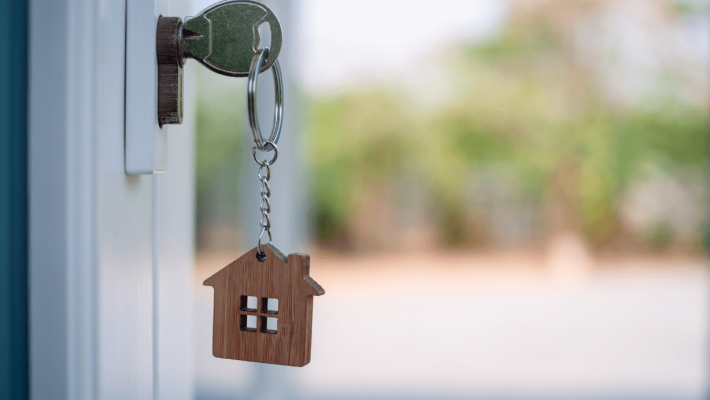A home is usually the most significant purchase that most people make in their entire lives, and most people will need to finance that purchase with a mortgage.
A mortgage is a type of secured loan, and – unlike rent – your monthly payment has several different components. Understanding more about these components of your payments can help you evaluate your mortgage options and make the best choices for your future.
The Modern Mortgage Hasn’t Been Around That Long
It may surprise you to learn that the modern concept of a mortgage isn’t even 100 years old. Prior to the 1930s, buyers who couldn’t afford to purchase their homes outright still had to make a 50% down payment. They then had a perilously short amortization period with a large “balloon” payment that paid off the principal all at once.
That made homeownership difficult for a lot of people to even consider, and many who did ended up defaulting on their loans because they couldn’t afford the eventual balloon payment. It wasn’t until 1934 and the creation of the Federal Housing Authority (FHA) that everything changed. While there have been significant changes over time, the fixed-rate, 30-year mortgage started to develop.
What Goes into Your Monthly Mortgage Payment?
The two biggest factors affecting your monthly payment are the size and the length of your loan. The more you want to borrow, the higher your payment. Conversely, stretching out the term of the loan will lower your monthly payment – although you’ll end up paying more interest in the long run.
Generally, the following will be included in your monthly bill:
1. Principal
The principal of your loan is the amount you initially borrowed to buy your home. For example, if you buy a $250,000 home with a $50,000 downpayment, the principal of your loan would be $200,000.
While each monthly payment has at least some portion dedicated to paying off the principal, mortgage loans are structured so that the initial payments are applied mostly to the interest on the loan. Only a very small amount goes to the principal during the early years of your payments. Toward the end of your loan, that reverses.
2. Interest
The interest is where your lender makes their money. Interest is how they get repaid for agreeing to take a chance and front you the funds for the purchase.
Your interest rate is expressed as a percentage, and higher interest rates mean higher mortgage payments. That’s why there’s been so much attention paid to the remarkable swing that interest rates made from the historic lows of 2020 and 2021 to the relatively high rates in 2022 and 2023.
While there are factors affecting interest rates that are totally beyond a buyer’s control, buyers can get a lower interest rate by:
- Working to improve their credit scores. The higher someone’s credit score, the more likely that a lender will offer them better interest rates since they’re perceived as low-risk buyers.
- Exploring loan programs. Conventional mortgages often have higher interest rates than those obtained through government-sponsored programs. Lenders can often find lower rates by using FHA loans, USDA loans and VA loans.
- Paying “points” to lower the rate. Mortgage points are fees that you can pay your lender upfront in exchange for a reduced interest rate. This is also called “buying down the rate.”
Whether or not you should consider paying points to lower your interest rate depends a great deal on your financial situation and your plans – but even lowering your interest rate by a fraction can add up to significant savings over the long haul.
3. Taxes
Wherever you live, you have to pay property taxes, and these taxes can make up a significant portion of your monthly mortgage payment.
Your property taxes are assessed by your local government, so they can vary according to your location. These taxes are used to fund public services, so a significant chunk of that money ends up going towards local infrastructure for road repairs, the local fire departments’ services and also supporting the public school system.
Your property taxes will be based on your home’s “tax-assessed value” (which can differ significantly from what you actually paid for the property). The higher the value of your home according to your local county auditor, the more you’ll pay in taxes.
Your mortgage payment will usually include one-twelfth of the yearly taxes you’re expected to pay. These funds are usually held in an escrow account until it’s time for the payment to be made.
4. Insurance
Just like your taxes, your insurance payments are usually rolled into your monthly bill. Those funds are also held in escrow until the bill comes due. The insurance portion of your payment can include two different things:
- Property insurance: This is the kind of insurance that protects you and your property in case of losses due to fire, theft or other disasters.
- Private mortgage insurance: This is mandatory if your downpayment was less than 20% of the home’s cost. Private mortgage insurance (PMI) protects your lender against loss should you default. You can get rid of PMI once the equity you have in your home reaches 20%.
Now that you have a clearer understanding of the components of a mortgage, you’ll be better equipped to understand a proposed amortization schedule. That can help you make informed decisions about whether to add to your downpayment, buy points or change the length of your loan.
Remember, too, that your mortgage expert is there to help you. When you’re trying to make big financial decisions, it’s often wisest to rely on someone with lots of experience in that particular field.




